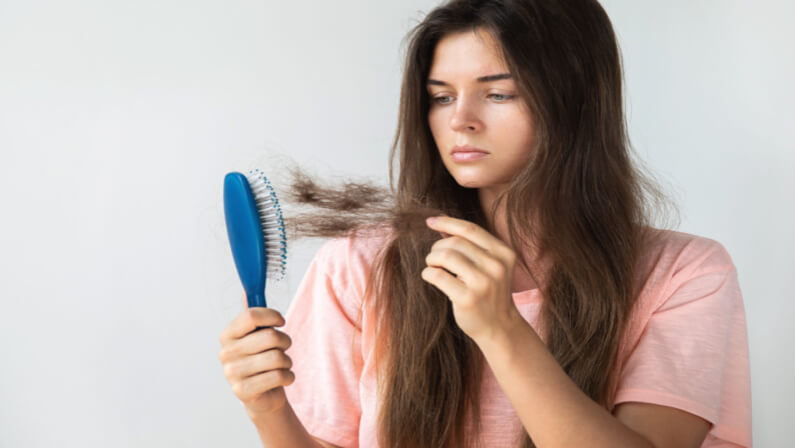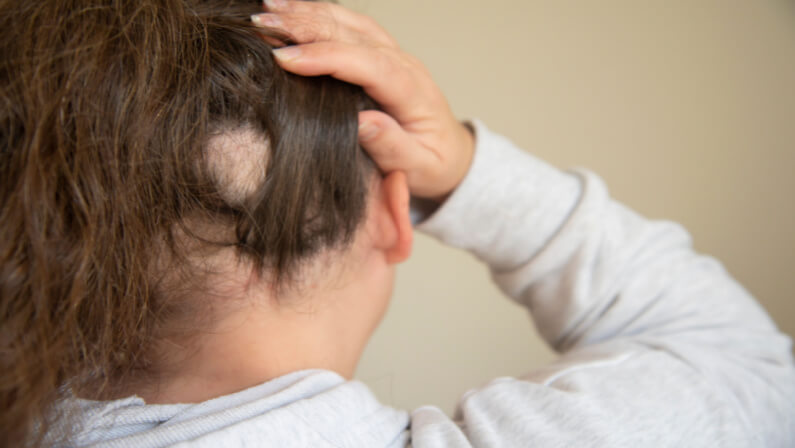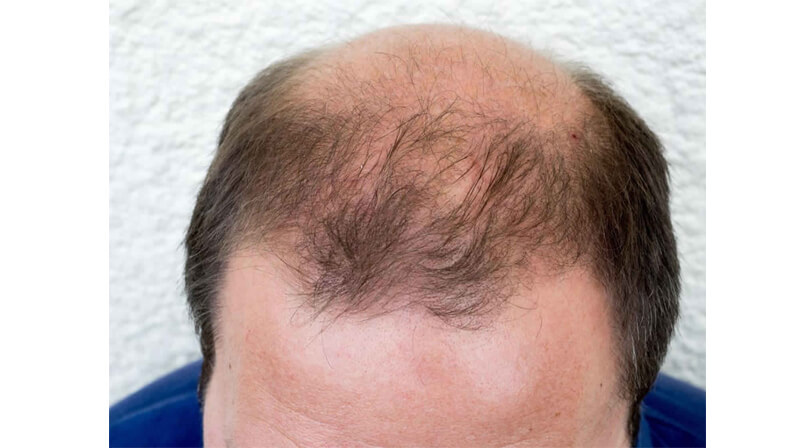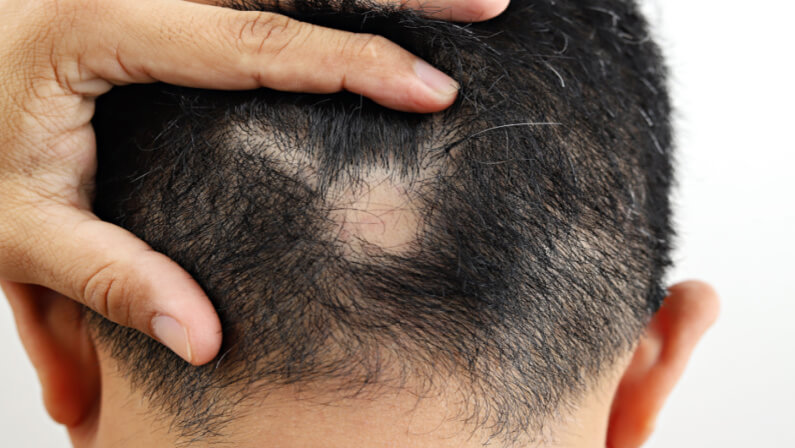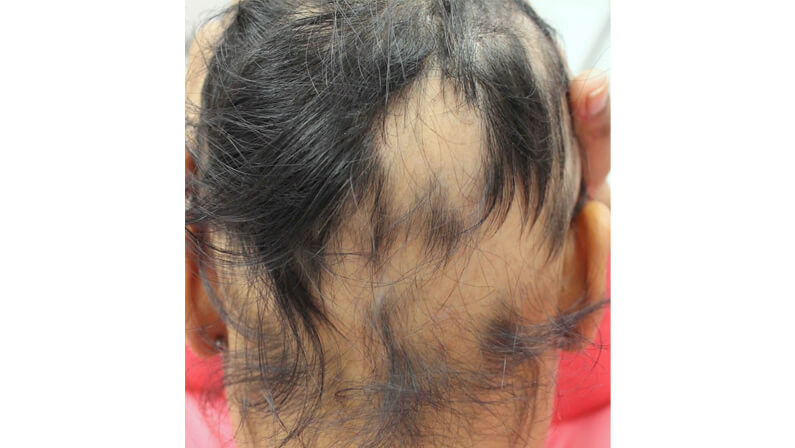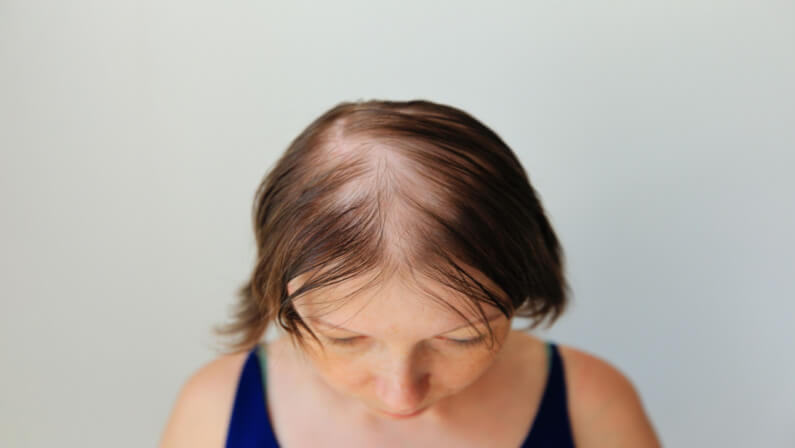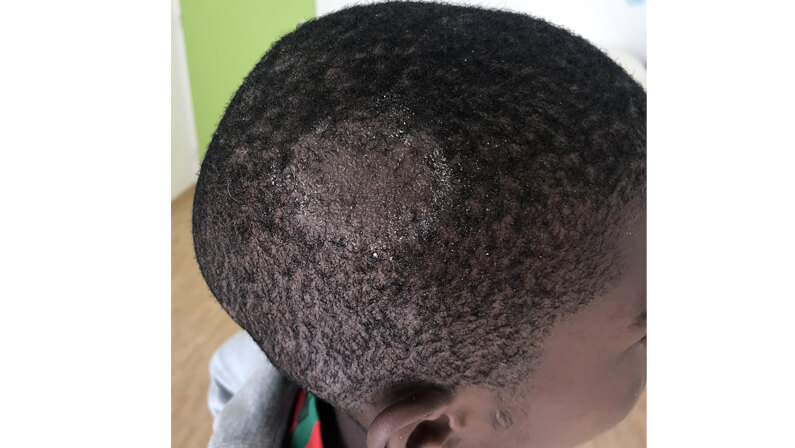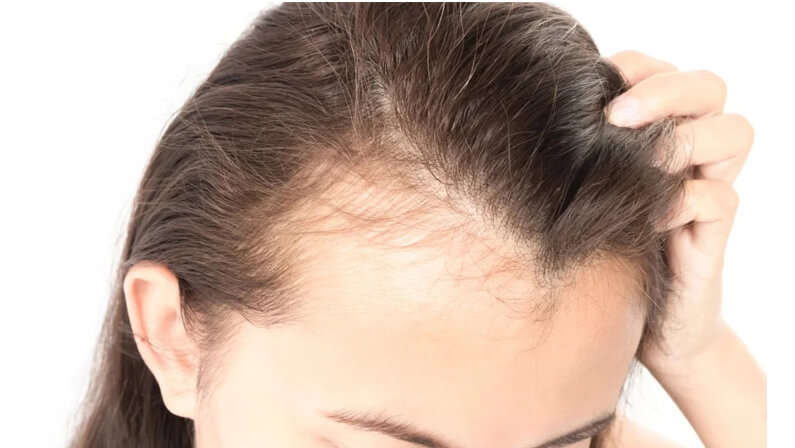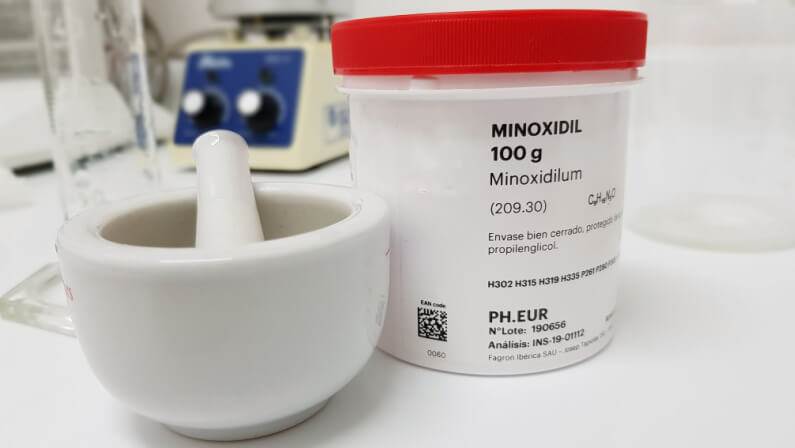Healthy hair can make you look youthful and confident. It gives you a healthier appearance and improves your well-being.
However, it can be frustrating if your hair suddenly starts to thin or shed due to different factors, such as an underlying disease or a poor lifestyle habit.
Fortunately, there are many ways to stop hair loss. But before you can do so, you need to find out what’s causing it so you can identify the most appropriate solution.
Table of Contents
Why does hair fall out?
Hall fall is an everyday occurrence. At an average rate, you lose around 50-100 hair strands daily.
Shedding is part of your hair’s life cycling—it starts from growth, and rest and ends with falling out.
However, slowly losing hair in patches or sudden hair loss may signal a different situation. While in some cases, hair shedding may be temporary and can be solved through medication or changes in lifestyle habits, others can signify otherwise.
There are instances when hair loss can be permanent and may be a side effect of an underlying condition.
If you experience sudden hair loss, consult with a board-certified dermatologist who can help you assess your condition.
Talk to us at Team Dermatology for a consultation in our Sugar Land and Memorial, Houston, Texas, locations.
Hair loss symptoms
Hair loss possesses various warning signs that you can observe visibly. These may develop for a period or may suddenly appear.
Gradual thinning on top of the head
Slow-paced hair loss on top of your head is a sign of hair loss that appears mostly in aging people.
Men start to experience receding hairline on their forehead when they reach the age of 35. Meanwhile, women begin to visibly lose their hairline by 40.
Circular bald spots
Patchy bald spots on your scalp are a symptom of hair loss, with discomfort and irritation before the hair fall. The circular spots may also occur in your beard or eyebrows.
Sudden loosening of hair
Physical trauma or an emotional shock can cause sudden hair loss. A bulk of hair strands may fall out as you wash your hair and comb. While this can be alarming, most hair loss conditions related to stress and trauma are reversible.
Full-body hair loss
Medical treatments such as chemotherapy can cause full-body hair loss. The hair may grow back once treatments are complete.
Patches of scaling that spread over the scalp
Circular scales over the scalp can cause hair loss. The patches in your head may be a sign of ringworm, a scalp condition that causes inflammation and infection on the surface, causing hair to fall out.
What causes hair loss?
While a person typically loses hair daily, some people who experience hair loss have more severe conditions that may require medical attention.
The following disorders are the most common causes of hair loss.
Androgenic alopecia
Androgenic alopecia is a common hair loss condition that affects 80 million Americans. This hereditary condition affects men and women and is reversible through different treatment options such as surgery and medication.
Male Pattern Hair Loss
Androgenic alopecia is classified among men as Male Pattern Baldness. It starts during puberty and progresses as they reach adulthood. The hair loss begins above the temples. It slowly affects the top of the head and ends with only a patch of hair left. As men age, they can experience complete hair loss.
Female Pattern Hair Loss
Androgenic alopecia in women is also called Female Pattern Hair Loss. This condition is considered a women’s natural way of aging, where hair thinning starts over the scalp, but the hairline remains visible. Unlike men, hair fall among women does end with complete baldness.
Alopecia areata
Alopecia areata is a common autoimmune disease in which the immune system destroys your healthy tissues. The damage includes hair follicles, causing your strands to fall out. The condition also blocks hair growth.
Alopecia areata can affect children and adults, with sudden hair loss symptoms that begin in tiny patches. Aside from the head, your hair also starts to shed from other body parts, such as eyelashes and eyebrows.
Anagen effluvium
Anagen effluvium is a hair disorder that develops after a medical treatment like chemotherapy for cancer patients.
While medications kill cancer cells, one of their side effects is preventing hair follicle production.
Rapid hair loss is visible on your scalp and other body parts. The hair goes back to its normal cycle once the medical treatment ends.
Telogen effluvium
Telogen effluvium is a hair loss disorder that often develops after a medical condition such as pregnancy, childbirth, and surgery. This disorder may also occur due to vitamin and mineral deficiency, specifically iron.
During this phase, many follicles in the scalp go into their resting phase, but it does not continue their hair growth process. As an effect, massive hair loss occurs without any signs of hair growth.
The hair usually grows back after three months. However, if the hair does not grow after more than six months, dermatologists suggest medication to aid hair growth.
Tinea capitis
Tinea capitis is a fungal infection and is also known as scalp ringworm. Hair starts to fall out in circular patches, leaving bald spots among children.
The spots show redness with scales and can be itchy for a period. In some cases, blisters start to occur, leading to the oozing of pus.
Traction alopecia
Hairstyles such as braids and tight ponytails can cause hair loss, especially among women. Constant and forceful hair pulling can lead to traction alopecia, which damages the scalp and leads to strands falling out.
Cicatricial Alopecia
Cicatricial alopecia is a rare hair loss disorder that causes inflammation in your scalp and damages hair follicles. In effect, scar tissue develops, which prevents hair growth.
The symptoms of this condition can either be a slow hair loss phase that is painless and hardly noticeable or an abrupt hair shedding with swelling and rash-like lesions.
Lichen Planopilaris
Lichen planopilaris falls under alopecia which directly affects the scalp. In this condition, the scalp becomes scaly, dry, and rash, causing a significant amount of hair to fall out. This condition also leaves the scalp painful, bumpy, and itchy.
Discoid Lupus Erythematosus
Discoid lupus erythematosus is another type of autoimmune disease and a specific type of cutaneous lupus. It inflames the skin, especially on the scalp, face, and ears. When the scalp gets swollen, it forms scar tissue where hair no longer grows.
Folliculitis Decalvans
An inflammatory condition, Folliculitis Decalvans destroys hair follicles with symptoms of swelling, redness, and itchiness. It also comes with lumps containing pus, which can cause irritation and itchiness.
Dissecting Cellulitis of the Scalp
A rare condition of hair loss, dissecting cellulitis of the scalp creates pustules or lumps in the scalp. Lumps lead to the formation of scar tissue, which damages hair follicles and prevents hair from growing.
Frontal Fibrosing Alopecia
Frontal fibrosing alopecia is a condition that starts with a receding hairline and is common among women in their postmenopausal stage. Some may also experience hair loss in the underarms and eyebrows.
Central Centrifugal Cicatricial Alopecia
Central centrifugal cicatricial alopecia is another hair fall disorder that develops from your hair products and styling techniques.
Frequent use of products such as gels, oils, and pomades with harmful chemicals can irritate hair follicles.
Moreover, techniques such as blow dryers, hair extensions, and curling irons destroy hair follicles due to extreme heat, preventing the healthy growth of hair.
How is hair loss diagnosed?
A specialist can help you with your hair loss diagnosis. They specialize in treating hair conditions such as alopecia areata.
It starts with a consultation about your symptoms, and the confirmation will come after you go through a series of laboratory tests.
Once the hair loss diagnosis completes, your dermatologist will plan a personalized medical treatment.
Our hair loss specialists at Team Dermatology can help you discover the right medication or hair restoration solution for your hair problem. Contact us to book an appointment in our Sugar Land and Memorial, Houston, Texas, locations.
Hair loss risk factors
Hair loss is a condition that can strike anyone, from children to the elderly.
These factors can largely contribute to your hair loss problem risk.
- Family history. Hair loss can be hereditary. If you have a close relative from your mother or father’s side who has baldness, you have an increased risk of developing the condition.
- Age. Thinning of hair can affect both children and the aging population. Typical hair loss problems among kids are alopecia areata and tinea capitis. On the other hand, senior men and women can experience androgenic alopecia.
- Weight loss. Sudden weight loss is associated with stress, hormonal changes, and vitamin deficiency. If these conditions occur, the health of hair follicles becomes affected, resulting in shedding.
- Medical conditions. Health conditions like diabetes, cancer, and lupus may trigger hair loss. Most of the side effects of these diseases stop the hair from growing.
- Stress. Chronic stress can slow down the production of hair follicles, causing hair fall.
- Poor nutrition. Deficiency in vitamins and minerals such as iron, zinc, Vitamin C, and Vitamin D leads to hair fall.
What are the treatment options for hair loss?
Your hair loss problem does not come without solutions. There are several ways to bring back your hair, including medication, surgery, and lifestyle changes.
Minoxidil (Rogaine)
Minoxidil is the generic name of Rogaine, a common over-the-counter medication that supports the health of your hair follicles. Massaging minoxidil into your head improves blood flow on your follicles, stimulating its strength during regrowth.
Finasteride (Propecia)
The generic name for Propecia, finasteride helps block dihydrotestosterone (DHT), or the hormone that causes baldness among males. DHT disrupts the growth cycle, making the strands thin and short.
Micro-needling
Micro-needling is a minimally invasive method that makes the hair look thicker and fuller.
It works by puncturing the skin with tiny needles. The skin’s reaction causes stem cells to stimulate and aids in hair regrowth.
The effects fully develop after three to six months. While it restores the appearance of fuller hair, this procedure does not cure any hair loss problem.
Low-level laser therapy
Low-level laser therapy improves hair density and works by stimulating epidermal stem cells. You can use a device to conduct this therapy regularly, as determined by your dermatologist.
Platelet-rich plasma
Platelet-rich plasma is a standard treatment option for hair loss, which aids in stimulating hair growth in a severely bald area. Through injection, plasma improves symptoms of hair thinning after four sessions.
If you are wondering how hair loss treatments work, you can consult a hair specialist to shed light on your questions before proceeding with any hair restoration solution.
Our hair specialists at Team Dermatology can discuss each solution so you can make an informed decision.
How can I prevent hair loss?
Some risk factors for hair loss are directed toward poor lifestyle habits. Thus, you can find a solution on how to prevent hair loss through these practical tips.
Diet
What you eat can directly impact the health of your hair. According to a study, people at risk of androgenic alopecia may find the Mediterranean diet as an aid in slowing down the disorder.
Suggested food options include fresh herbs such as parsley, basil, and raw vegetables consumed several times a week.
Supplements
Inject supplements into your diet, including Vitamin B complex, zinc, and iron, promoting hair thickness. Collagen also boosts hair regrow.
Hair care
Be mindful of your hair care routine. Ditch products containing chemicals that can harm your strands and use natural ingredients instead.
You may also reconsider styling techniques, such as hair dryers and curling irons, that can damage your hair follicles.
Medical treatments
Medical treatments are advisable for people who have severe hair loss problems. Treatments include micro-needling and injections of corticosteroids.
Medications
Minoxidil is a common medication to prevent hair loss, which can be applied as a topical treatment. It comes in various forms, such as creams, shampoos, and lotions.
Other methods
Some methods you can adopt are using hair wigs and shawls or choosing minimally invasive procedures like hair tattoos.
While these methods may not cure hair loss problems, they can make your hair appear thicker and fuller and hide your baldness.
When to see a doctor about hair loss
Hair shedding is a regular daily occurrence. However, if you observe alarming symptoms such as losing bulk amounts of strands daily or having bald patches on your head, you need to see a doctor for medical advice.
Consult immediately with one of our dermatologists at Team Dermatology. Our hair loss specialists can develop an effective treatment plan to restore your hair’s health.
Book an appointment with us today at any of our locations in Sugar Land and Memorial, Houston, Texas. Contact us to learn more.
Can hair loss be reversed?
Some hair loss conditions like alopecia areata can be reversible with proper medication and surgery. If you opt for medication, the results may start to appear after months to years.
Talk to our dermatologists at Team Dermatology to find options suitable for your hair loss condition. We can also discuss with you how much is hair loss treatment before you proceed with any of our hair loss services.
Stop hair loss today
Team Dermatology offers Platelet Rich Plasma Hair Restoration, a hair loss solution that is effective and safe for people with slight to moderate hair loss problems.
This procedure is non-invasive, with minimal side effects disappearing after a few days. It also won’t require a longer recovery period and downtime.
Board-certified dermatologists facilitate our hair restoration solution. We take pride in having hair loss specialists with years of experience dealing with hair loss solutions that have helped many patients from our Sugar Land and Memorial, Houston, Texas.
Find out how to prevent hair loss and bring back your healthy, fuller hair with Team Dermatology. Book a consultation or visit one of our locations today to get started.

